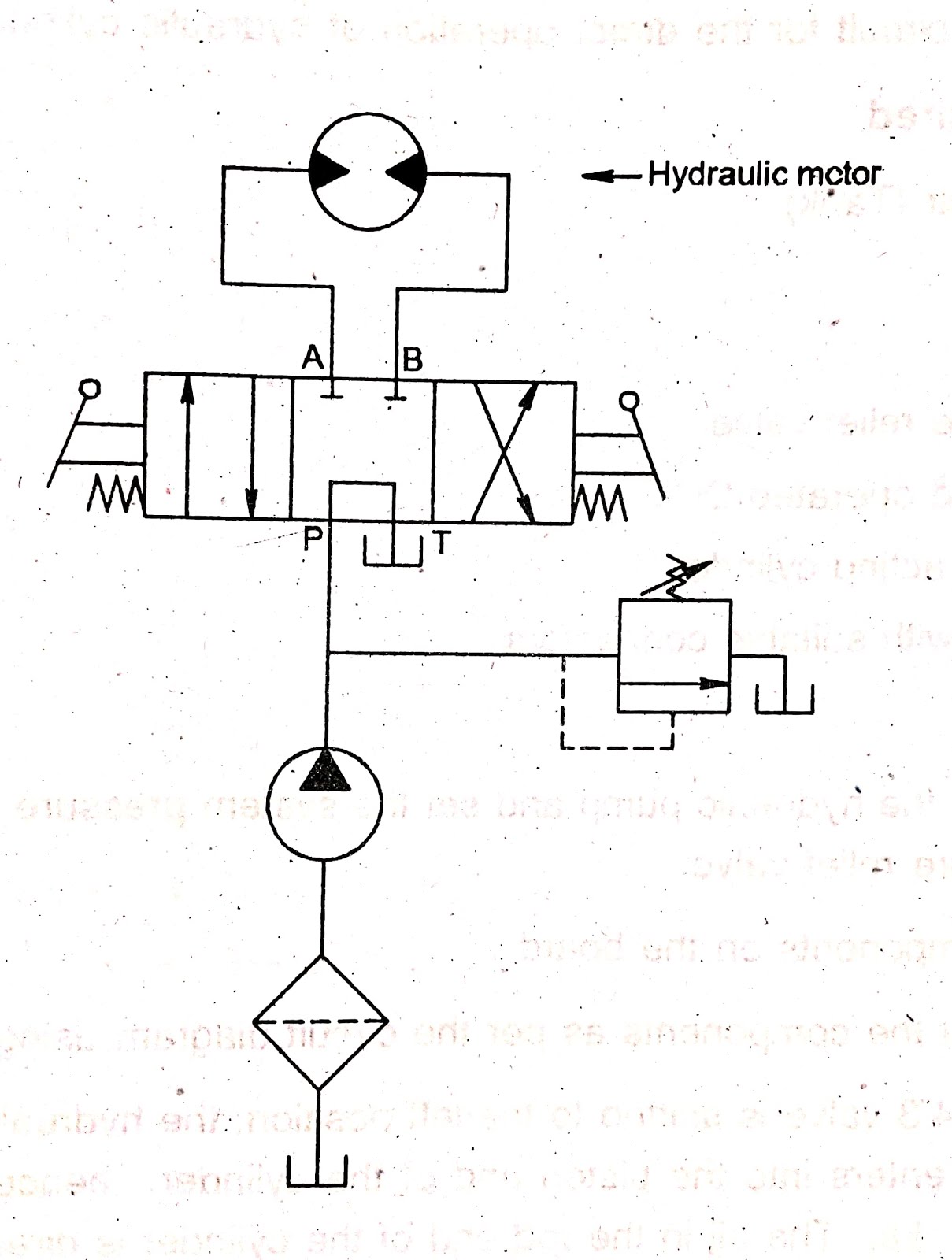
Machine Drawing Double acting cylinder Pneumatic Circuit
2. Remove the external steel wire ring. 3. Remove any dirt that may have accumulated on the cylinder head. 4. Using the mallet and punch, push the head into the cylinder tube until the. is fully exposed. This will also move the internal wire ring into its removal position. 5.
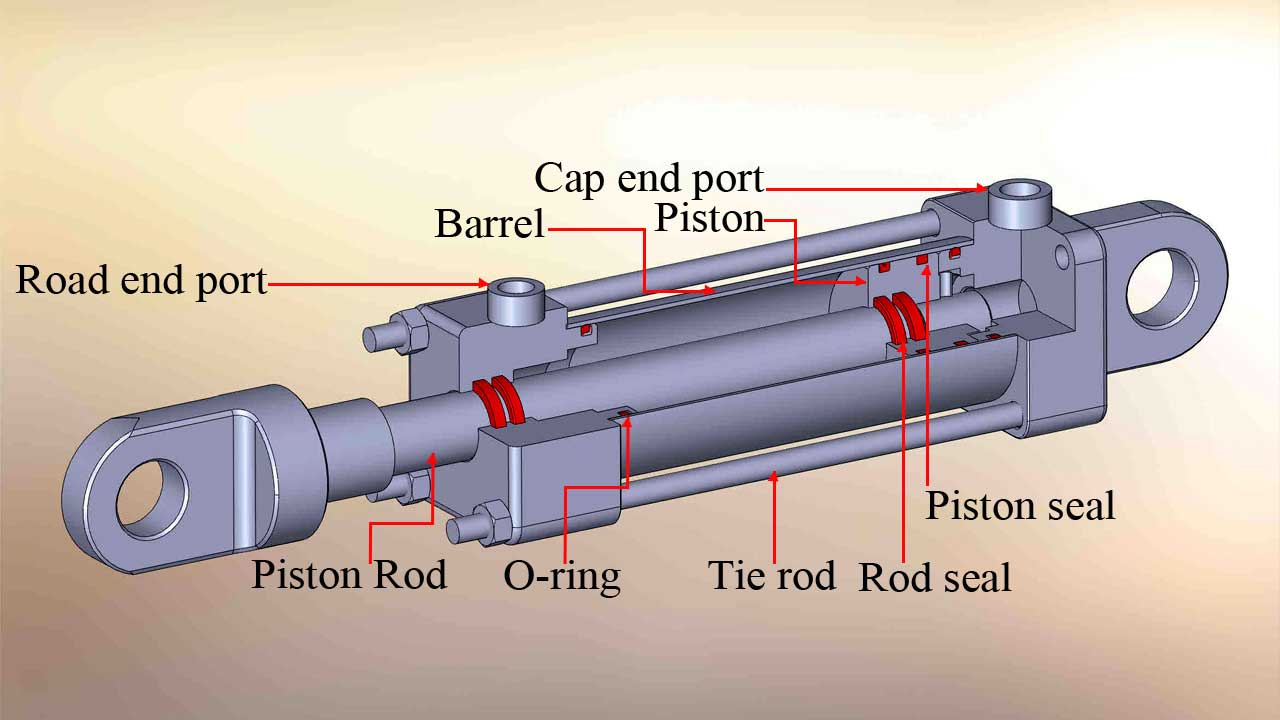
What Are The Parts Of A Hydraulic Cylinder? Anbao Hydraulic
1.3 Hydraulic Cylinders. Define the term actuator and give examples of a rotational electrical actuator and a linear hydraulic actuator. Draw a pictorial diagram of a double acting hydraulic cylinder. Identify the barrel, piston, rod, cap end plate, rod end plate, rod wiper, cap end port, and rod end port. NOTE: the rod end is often called the.

Hydraulic Cylinder Working Principle
The hydraulic cylinders on this excavator operate the machine's linkages. Hydraulic cylinders in a hot press of a particle board machine. A hydraulic cylinder (also called a linear hydraulic motor) is a mechanical actuator that is used to give a unidirectional force through a unidirectional stroke. It has many applications, notably in construction equipment (engineering vehicles.

Hydraulic Cylinder Equations Tessshebaylo
A hydraulic cylinder is a mechanical actuator that gives a unidirectional motion through the force of the hydraulic liquid. It is also referred to as a linear hydraulic motor. It has a wide area of applications, ranging from the construction industry to mechanical machines. Without this, we can not see the enormous development of the nations.

35 How To Rebuild Hydraulic Cylinder Diagram Wiring Diagram List
The function of a cylinder in a fluid power system is to convert energy in the fluid stream into an equivalent amount of mechanical energy. Its power is delivered in a straight-line, push-pull motion. Graphic Symbols: Following diagram illustrates standard ANSI (American National Standards Institute) graphic symbols for use in circuit diagrams.

What is a Hydraulic Cylinder with Hydraulic Cylinder Diagram
The term cylinder is commonly used to describe a device that gives linear force output and movement. A cylinder may also be referred to as a linear actuator. Cylinders are broken down into two main categories: pneu-matic and hydraulic. Pneumatic cylinders can be operated by several types of gases; however, compressed air is by far the most common.

HYDRAULIC SYSTEM FOR BEGINNERS Mechanical Engineering Professionals
Simple Hydraulic System Hydraulic Schematic Symbols Accumulator Cylinder Double acting Directional Control Valve (manually operated) Dump Pumps Hydraulic System Components: Gear Pump Hydraulic Pump Symbol Hydraulic System Components : Accumulator Accumulator symbol Hydraulic System Components : Directional Control Valve
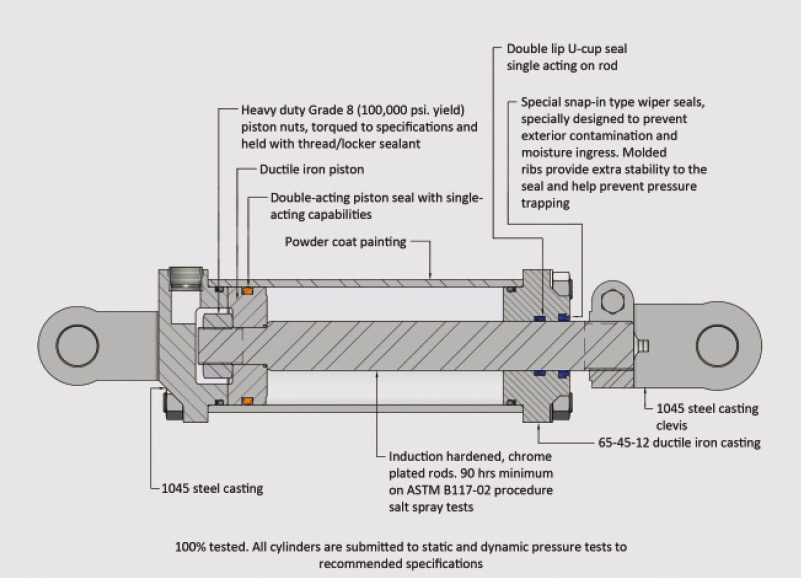
Hydraulic Cylinders, Cylinder Parts and Hydraulic System Parts Supplier
Piston Rod Typically made from cold-rolled steel fortified with hard chrome plating, the piston (cylinder) rod is attached to the cylinder head and the piston. Hard chrome is essential for giving piston rods the ability to last a long time. The piston rod also enhances the seal, which helps prevent leaks. Seal Gland
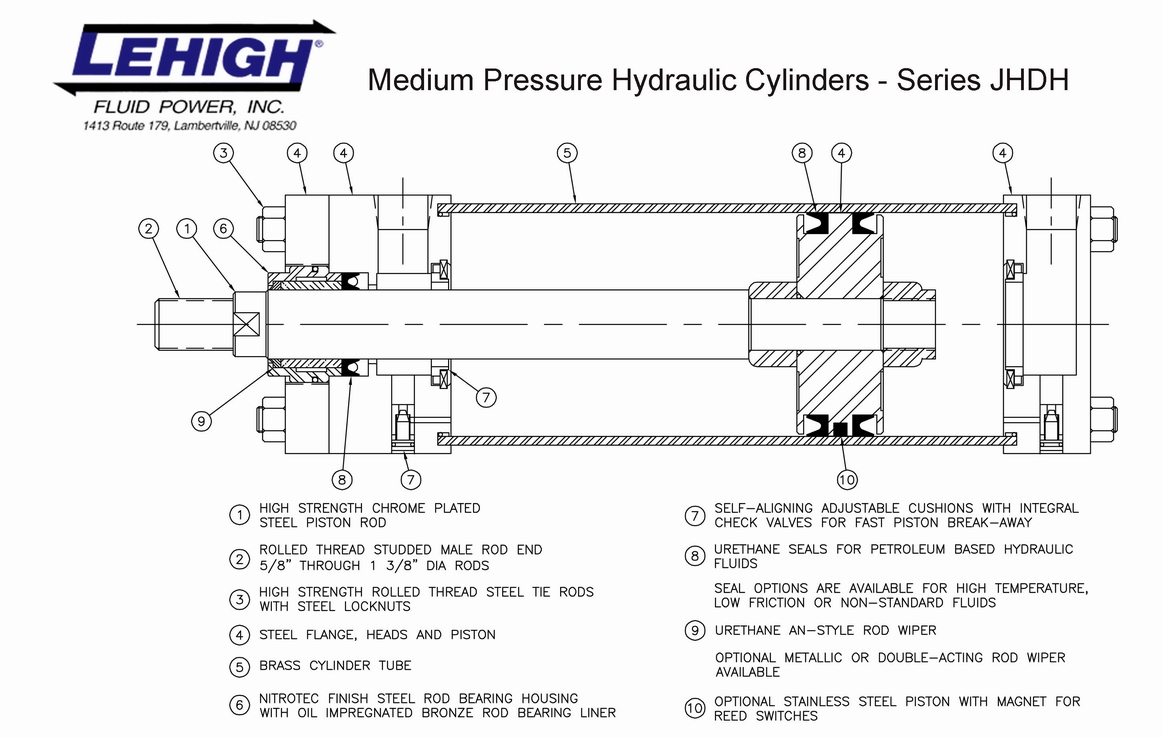
Hydraulic Cylinders Lehigh Fluid Power
Fτ = P∏ (r12 - r22 ) Where: Fτ is the resultant force. P is the pressure distributed load on the surface. ∏ is pi, approximately equal to 3.14159. r1 is the radius of the piston. r2 is the radius of the piston rod. In hydraulic cylinders, the force can easily be multiplied or divided throughout the system.

If it’s an older system, it could be that the hydraulic cylinder is
A hydraulic cylinder is the actuator or 'motor' side of the system. The 'generator' side of the hydraulic system is the hydraulic pump which brings in a fixed or regulated flow of oil to the bottom side of the hydraulic cylinder, to move the piston rod upwards. The piston pushes the hydraulic oil in the other chamber back to the reservoir.

How to Rebuild a Hydraulic Cylinder Intella Parts Company, LLC
Hydraulic Advantages. Hydraulics has many advantages not always found in electrical and mechanical type drives. Hydraulic cylinders and motors can be operated at variable speeds. By varying the volume flowing into the actuator (cylinder or motor) the speed is changed. The hydraulic cylinder or motor can be stalled under a load.
Hydraulic Cylinder Parts Diagram General Wiring Diagram
1. Identifying the line types In a hydraulic schematic, each line type has a unique meaning. In addition, colors can be added to indicate purpose of the line. In the figure below, all of the basic line types are shown. The basic line is a solid line that represents a working pressure hose or tube.
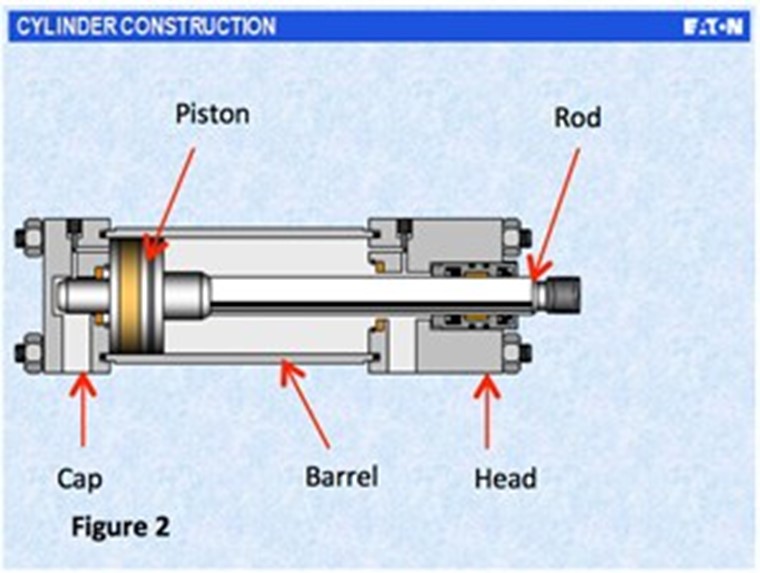
Hydraulic Cylinder Hyspecs Hydraulics Australia
A hydraulic cylinder schematic diagram provides a visual representation of the different components and fluid flow paths within a hydraulic cylinder system. By studying these diagrams, engineers and technicians can gain valuable insights into the functionality and performance of hydraulic cylinders.
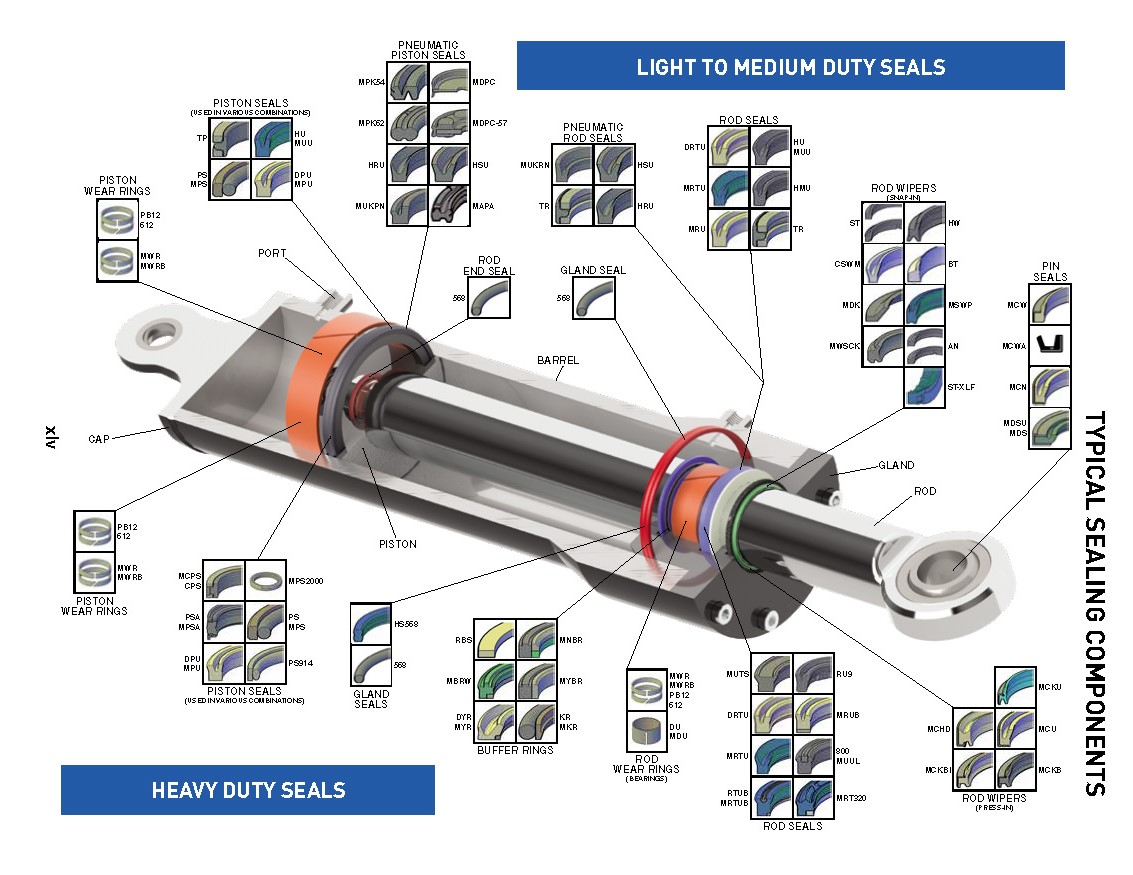
The Function of Seals In a Hydraulic Cylinder หน้าที่ของซีลในกระบอกไฮดรอลิก
The basic drawn lines, cylinder symbols, ejector symbols, and the Do Not Scale note are just a handful of items that are particular to engineering drawings for hydraulics.. Cylinders do the major work in a hydraulic system but in a hydraulic press, an ejector is also needed. Both components utilize the same basic symbol and it's another.
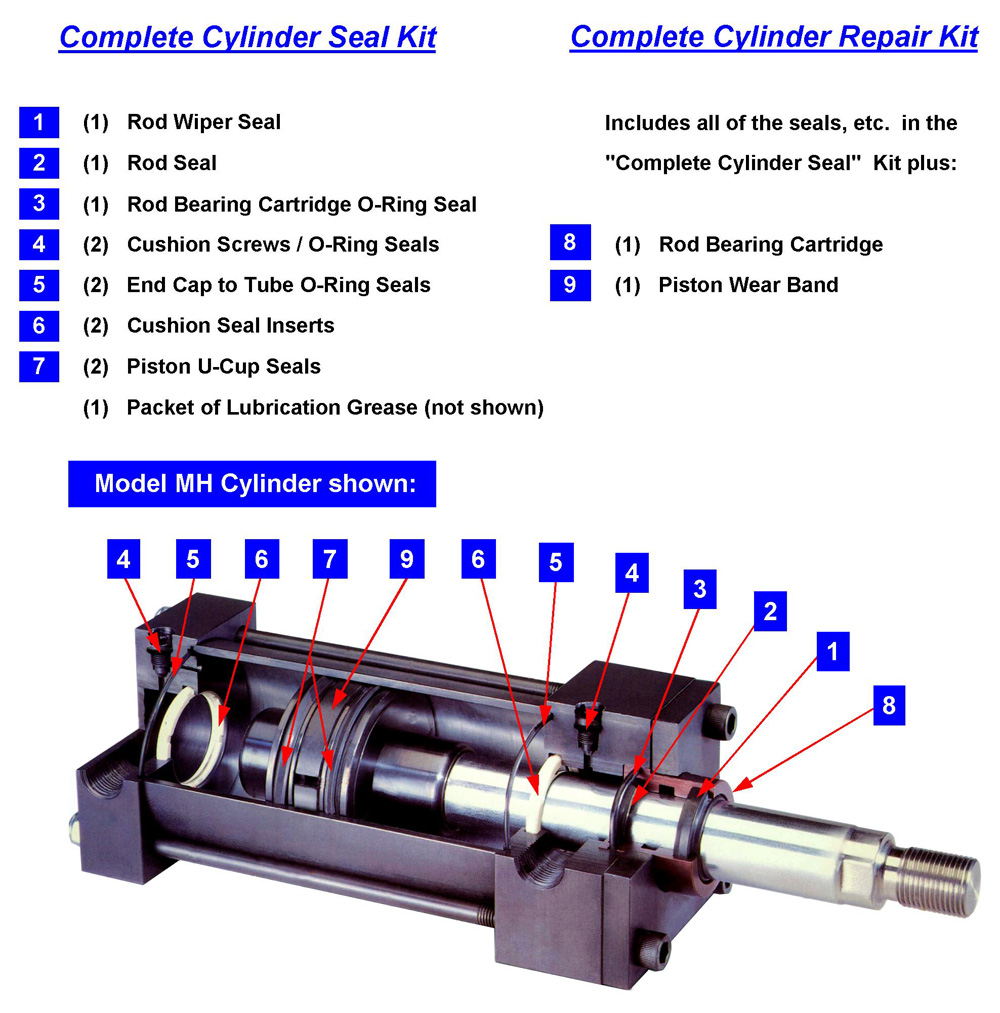
Peninsular Cylinder Co. cylinder repair, hydraulic cylinder repair
On this page, Carr Lane ROEMHELD provides a comprehensive table outlining the definitions of each symbol used in a hydraulic diagram. Engineers can use this page as a reference to determine common schematic symbols used in fluid power, hydraulics, pneumatics, diagrams and circuits. Basic Symbols Representing Hydraulic Components

Sealing the deal in hydraulic cylinders PI Process Instrumentation
Introduction to Fluid Power Forces in Liquids Hydraulic Fluids Pumps Fluid Lines & Fittings Valves Sealing Devices & Materials Measurement & Pressure Control Devices Reservoirs, Strainers, Filters, & Accumulators Actuators Pneumatics Basic Diagrams & Systems Graphic Symbols for Fluid Power Diagrams Basic Diagrams and Systems